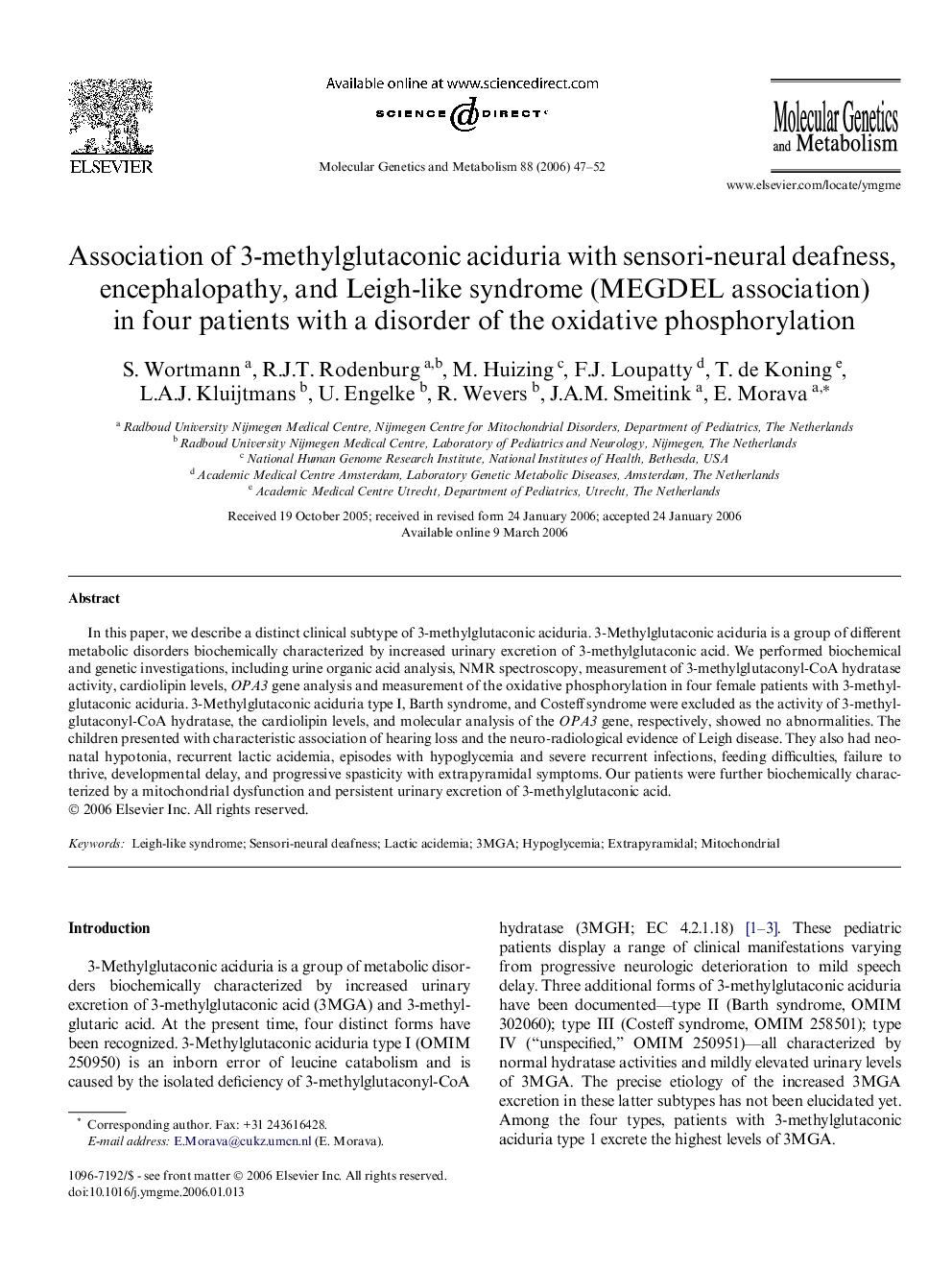| Article ID | Journal | Published Year | Pages | File Type |
|---|---|---|---|---|
| 1999873 | Molecular Genetics and Metabolism | 2006 | 6 Pages |
In this paper, we describe a distinct clinical subtype of 3-methylglutaconic aciduria. 3-Methylglutaconic aciduria is a group of different metabolic disorders biochemically characterized by increased urinary excretion of 3-methylglutaconic acid. We performed biochemical and genetic investigations, including urine organic acid analysis, NMR spectroscopy, measurement of 3-methylglutaconyl-CoA hydratase activity, cardiolipin levels, OPA3 gene analysis and measurement of the oxidative phosphorylation in four female patients with 3-methylglutaconic aciduria. 3-Methylglutaconic aciduria type I, Barth syndrome, and Costeff syndrome were excluded as the activity of 3-methylglutaconyl-CoA hydratase, the cardiolipin levels, and molecular analysis of the OPA3 gene, respectively, showed no abnormalities. The children presented with characteristic association of hearing loss and the neuro-radiological evidence of Leigh disease. They also had neonatal hypotonia, recurrent lactic acidemia, episodes with hypoglycemia and severe recurrent infections, feeding difficulties, failure to thrive, developmental delay, and progressive spasticity with extrapyramidal symptoms. Our patients were further biochemically characterized by a mitochondrial dysfunction and persistent urinary excretion of 3-methylglutaconic acid.
